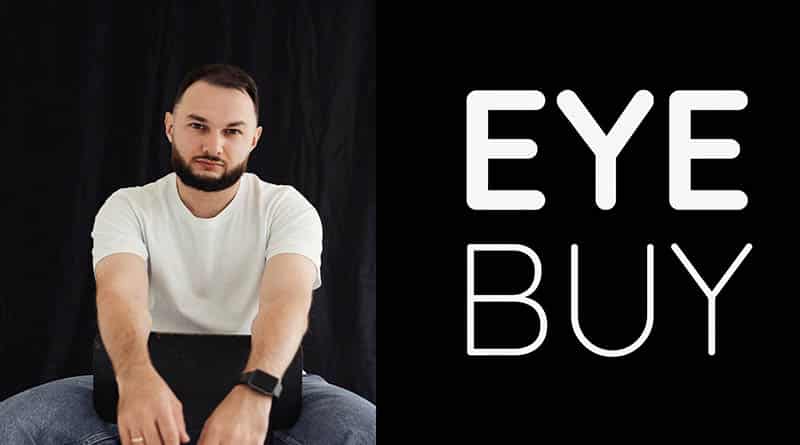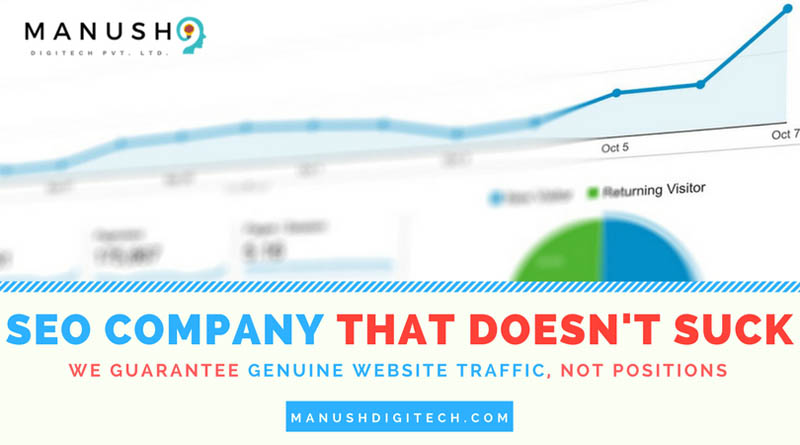Selling strategy is a mastery game in which you either succeed and scale up business activities or dramatically fail and get nothing at the end. The critical element of the selling strategy is the ability to sell a product or a service without hinting at the sale occurrence. It is about storytelling: nothing more, nothing less – that is how startups win customers’ hearts.
Let’s break down the selling strategy into small pieces and uncover the secret sauce of success there.
How do startups sell?
There are numerous variations of selling strategies, like fish in the sea. It is challenging for newbie entrepreneurs and startups to choose the right approach to fit their business model perfectly. So what are the most common selling strategies and their principles, and how do they work in the real-life world?
Networking is crucial
Networking is the way to go, whether you sell B2B or B2C products. It is the “must-have agenda of any startup to make business connections and acquaintances in the industry, or meet potential clients. You have a higher chance of converting clients by talking to all parties directly. Usually, they are more loyal to your business and honest when giving feedback and advice.
Word of mouth
Even though this approach might seem outdated, it still works wonders, and it is ridiculous not to take an opportunity and utilize it. For instance, ask your client who fell in love with your product or service to recommend it to a friend.
Another example of word of mouth is ChatGPT and their blog, which has been trending for a couple of weeks. Recently I read how Artificial Intelligence can create a perfect presentation for you. Such products are the best way to market products truly.
Focus on Small Markets
Focusing on all potential markets might be challenging when startups start their operations. That is why narrowing the search and concentrating on a small chunk of specific customers is much easier. In other words, startups will improve their sales potential by focusing on small niche markets. In 2020, approximately 40% of the companies failed to meet their sales goals, as noted in HubSpot’s latest Global Sales Enablement Survey.
Get into Customers’ Shoes
One of the fundamental problems that startups have to understand is their customers’ needs and wants. How the choices and behavior may differ, and what is the most optimal approach to take. Remember, there are never two customers who think and behave in the same way, even if we wish to. At least half of the business sales prospects could be a better fit for what they sell, noted Sales Insight Lab in their recent report. So, mindfully observe your customers’ behavior, show empathy, and understand the problem.
Search Engine Optimization
Search Engine Optimization is a great tool to promote the startup, its products, and its services. In fact, SEO works out best when you are an expert in the industry. When we were working on the iSmash, a company focused on the repair of the iPhones, we did not focus on the SEO that much. However, we mentioned a couple of critical phrases on the website: “iPhone repair in 19 minutes at your home.” And with the help of such keywords, we ended up on the first page of Google, and our traffic was cosmic. The ridiculous part behind it is that we did not aim to do any tricks with SEO. It happened randomly. We did not expect such great results just from one phrase. After this incident, we took search engine optimization more seriously.
SEO does not work fast as flash. Give it time to adapt and adjust to the search engine. It may take six months. This tool allows you to receive free traffic on your website.
Targeted Ads
Targeted ads are the best way to attract people to your website with the help of social media channels. Choose the social your targeted auditory uses daily and push ads there. Mostly, startups use Facebook and Instagram to taste the waters initially.
Buyer persona: building and identification
A business buyer persona is crucial before selling the product. It requires a sensitive approach with extensive research and deep insights. Surveys and interviews can help identify common problems and solutions.
PAS Strategy
PAS Strategy, developed by Adam Ferrier, is one of a startup’s most used selling strategies. With its help of it, businesses identify the problem (P), agitation (A), and solution (S). Theoretically, the strategy’s success lies in the “genuineness of the solution and agitative the problem truthfully, “ as noted in Alcor Fund.
Public Relations
In the case of Public Relations (PR), it works in most cases. For instance, when we were pitching the iSmash startup at Skolkovo, a Moscow-based innovation center, a reporter from RBC, a Russian news portal, approached us. As it turned out, he liked our idea and business model and wrote an article about it later. This article was an overnight success for the next two weeks: we did not have time to proceed with all the inquiries. In terms of website traffic, PR can play to your benefit. Аnd it is a great way to improve brand positioning.
Content marketing
Content marketing is also one of the efficient ways that you have to implement in the selling strategy. 12 STOREEZ, a Russian-based shop, boosted its growth with the help of content marketing. In fact, they started creating Instagrammable content filled with models and compositions.
The same strategy applies to influencer marketing, where the opinion of personas matters. Especially if they have a significant following of the business’s target audience. For instance, if your company sells a B2C product, such as sneakers, you need to go to the influencers based in the sports industry and tell them about the product with all of its perks. Then, negotiate a deal with them and wait for the website traffic.
Conferences and exhibitions
For B2B startups, visiting industry conferences and exhibitions is a must. By doing that, startups get involved in a public building, a process of publicly building a company that emphasizes writing weekly updates of recent news, events, etc. In my experience, the general building helped me land a contract with Sberbank, a Russian-owned banking and financial services company.
Interestingly, Sberbank found my company through the web. Firstly, it was an infamous story about Timati, a Russian rapper, and singer. Then, the Facebook post appeared on Sberbank’s feed, and they decided to contact me, and sooner we negotiated the deal.
Another example in my career was the creation of the service “Installment 24,” which was aimed at online installment purchases. So we took advantage of industry conferences and went to various events, where we recruited many business clients such as shops or e-commerce businesses.
Referrals
This can also be viewed as a structured word-of-mouth approach with promo codes and special deals. This is extremely helpful for B2C solutions. I had a similar experience with iSmash. We started going to large corporations, such as Mail.ru, that have internal grids and offer deals for their employees on phone repair. The traffic we got from the corporation significantly boosted our business, so we decided to do the same with other big companies – Yandex, Gazprom Digital, Black Star, and many more.
Such strategies are the most working ones as they have been around for a while, are established, and still work. And the projects which use such selling strategies in their ecosystem prove the same. So, which method should the startup choose?
The decision should be made based on several facts – the startup as a whole, the industry it operates in, and the stage of the startup. For example, if it is an industrial startup, it is better to go to B2B events and exhibits to look for connections and future business partners. For instance, if the primary traffic comes from the website, it is better to focus on targeted ads and search engine optimization. In the case of targeted ads, the effect will be seen immediately, unlike with SEO, which could take a couple of months.
Direct sales: is there a future?
The classic sales department with direct sales still works, especially with B2B. As a vivid example, a cold email or a newsletter has a high open rate and readability rate, along with responding and contacting metrics. Thanks to modern technology, you can now automize emails and LinkedIn newsletters with the help of Hunter.io. Just put the person’s name with the company, and you are ready to hit the button that would send 1,000 emails in a couple of minutes based on your provided database.
Usually, such newsletters have an excellent reading rate. And if you do not get the answer right away, you can choose the follow-up option in the app. This is different from the classical version of email marketing, though, as it is more of email sales. On top of that, if the email comes not from the company but a specific persona – Sergey Vart, people are more likely to respond to it as the founder, a C-level executive, reached out.
Principle of Native Selling, its pitfalls, and the winning strategy
The principle of native selling is one of the most innovative practices you could implement into the selling strategy. According to this method, you use paid advertising in which the ads look and feel the media format where they appear. It feels natural, and because of that, it attracts more customers to the table. Recent research by LinkedIn proves the same: Consumers interact with native ads more than traditional banner ads. Native ads also have the potential to increase conversions.
Before focusing on another approach of selling strategy, “selling without selling,” known as the win-win situation, I wanted to mention a couple of pitfalls you must eliminate from your business strategy. Even if they sound like a good idea at first glance, they would most likely fail you as a person first and as a brand second.
Do nothing but create an attractive package.
The product you are producing should be quality. Otherwise, it will bury your business. Many startups are selling the wrong product in a pretty, marketing-savvy package. The company works differently than that.
When we were building iSmash, I was the Marketing Director there. It came to my attention that our competitors were copying our website and its content. Even though it looked beautiful, the services they offered were unacceptable to customers: they did not follow the Apple standards of iPhone repairs, use original details, and masters could not assemble the phone due to the lack of training. In other words, poor product and service quality itself is a red flag. It also signifies that you must focus on the product rather than marketing and selling strategies.
Ignorance as a variation of lousy marketing
When a company does not respond to customers’ messages through social, it is considered lousy marketing. For instance, when customers leave questions, reviews, or other messages on Google Maps or Yandex Maps, there is silence from the corporate side. It is a sign that the company is doing lousy marketing.
Yet, it can be fixed with some automation implementation – start monitoring all your social media channels to answer clients on all of their questions, even if they ask them on Google maps. It will increase your reputation as a seller or service provider.
Target market and its misconceptions
Not understanding the target market is one of the worst problems you can face when entering a new market. A vivid example of this could be the launch of a sexy version of bathing suits for the United Arab Emirates (UAE) or Saudi Arabia.
One business invested three million rubbles in such a product and lost everything. They neglected cultural differences between Europe and the Middle East, where it is illegal to show off half-naked girls in ads in the Arabic language. If I am not mistaken, it was developed in a sexual scandal. So, it is crucial to understand the target market before entering it.
Seek attention from loyal customers
Based on my experience, attracting old and loyal customers is much easier than searching for numerous ways to find new ones. In fact, most entrepreneurs need to follow this practice. The major mistake behind it is that they need to look at the proper stuff. In particular, they need to pay more attention to how to retain old customers. They do the opposite by putting lots of money into the funnel to attract new ones.
Think about it as the sieve with holes in it. Instead of plugging the holes, so the water does not come out, you try to put more water in there, meaning spending more and more money on it.
Differentiation: another obstacle
Another common obstacle in selling strategy that startups face is the need for more understanding of how you can differentiate yourself from your competitors. This is extremely visible in trivial services such as legal or accounting services for business. When there are 500 companies around you doing the exact same thing, it might take time to determine the proper positioning. But you have no choice but to do so.
If you’re providing legal business services, you must detect which companies you serve. Are those businesses struggling? This could be the precise point where you differentiate.
How to sell the unsellable?
While we mentioned the common mistakes startups are most likely to make when starting business operations, we did not talk about one of the most exciting things about the selling strategy: How do you sell the unsellable?
Selling not sellable, is a mastery game. You perform a CustDev interview where you talk with someone about a problem you are trying to solve. You use your tactics to understand and unveil his problem and suggest the solution in the most natural way possible.
Content marketing is one of the best ways to sell without selling techniques. While you give out helpful information, the person who was looking for it may come to you for the specific product or solution.
Top new age sales strategies
We talked about the common selling strategies and simple yet intelligent techniques, including native selling, selling without selling, and selling the unsellable, and the best ways to approach all of this for a startup. Now is the perfect time to cover some upcoming sales strategy trends in 2023. So let’s wrap it up.
Video shopping
The trend of video shopping that we do in our company is growing. More and more people are getting used to video content, and enhancing it will just improve the business model of every business. Especially if it is the e-commerce
Chatbots
Chatbots, including ChatGPT, which focuses on technology and marketing, are in high demand. In particular, they are a great help when you want to replace communications with customers from human-to-human to robot-to-human and save the authenticity of messages. Some companies, for instance, use WhatsApp as a newsletter tool with implemented chatbots where you can enter the required information about yourself, and the robot will match the perfect product or service for you.
Account-base marketing
In B2B sales, account-based marketing is one of the practical tools businesses could use. It works on personalization based on the profile of the highest-earning customers. Simply put, it is a segmentation when the “personal” marketing is shown only to the most profitable clients. There is a unique technique behind account-based marketing and the proper use of it, but this is a different story.
Video Marketing
Similar to video shopping, video marketing is a way to go in 2023. In general, videos and video content in such formats as Instagram Reels, Tiktok, or YouTube Shorts, work the best with the potential auditory.
YouTube is a good traffic source, especially if you collaborate with other creators or integrate someone into the show. This, however, is a trend that has been around for a while. It is a practice that performs. I checked the statistics recently, and it is still developing, along with referral marketing, where you can invite new users with promo codes shared by old and loyal clients. As a vivid example, in the US, when you order groceries for various cooling recipes, companies put coupons with the message: “On the next free box for your friend.” And your friend can get free food based on the voucher.
Influencer marketing 2.0
Influencer marketing is changing. Businesses run to micro- or nano-influencers with narrow expertise in a specific business area. They turn to micro- or nano-influencers with narrow expertise. Cosmetic companies could promote their products with an influencer with 10k followers doing makeup tutorials.
Interactive content
Interactive content is another rising star of the selling strategy. I noticed this notion on numerous websites, including iBuy. For instance, you show the video with the product card inside – an interactive info-graphic.
Quizzes are also a great tool to utilize interactive content: Answer some questions on the website and receive a generous discount. This could also be considered a part of geolocation marketing suitable for cafés, restaurants, clubs, spas, and so on.
Placement through geo-services is an automatic personalization, and a dynamic pricing model also refers to it. For example, the prices will vary if you go to Amazon for the same product but with different IP addresses. For Greendale, a poor neighborhood, it will be cheaper than Beverly Hills, one of the beautiful areas. Aviasales and Yandex.cab use the same strategy. For instance, if you order a cap from the same place, it will be more expensive than if you order it from the next house.
Flexibility is key.
The modern approach does not require following instructions one by one. Instead, the opposite is to find the balance between standard strategies and flexibility. The business will likely solve customers’ issues more effectively by focusing on a flexible approach where demand is a priority, not an option. This includes adapting the products’ needs to a customer’s focus and creating flexible payment terms and time-bound discounts.
Chorus AI, a conversation-recording intelligence platform, emphasizes shifting payment cycles, flexible packages, and net payment terms. The corporation does all these procedures to adapt to changing customer circumstances.
A personal, one-to-one world
The one-to-one approach is a relatively new strategy that appeared on the market with the rise of Zoom and other virtual conferences and events. It works wonders, as you can solve upcoming issues and avoid misunderstandings between the other party. And it can be done virtually without wasting time on the road. As you can see, a personal approach is drastically different from public conferences, where the number of participants exceeds 100 people, if not more.
Mortgage Automator, a private-lender platform, is an excellent example of the personal approach execution. The founders of Mortgage Automator experimented by meeting one-to-one with customers they had met previously at the conference. As it turned out, consumers appreciated such acts as they received valuable time with the presentation of new features of the platform. Sometimes, being a human is the most straightforward way to make a deal.
The measure of success: updated version
We should remember the m-words, metrics and measurement, as it is an integral part of the selling strategy. Historically speaking, the measure of sales team success was counted as the total number of deals closed for a particular time. In 2023, everything changed to more advanced techniques. In particular, founders are starting to measure changes rather than focusing on the traditional monthly recurring revenue or customer churn metrics. This metric overviews how effectively and efficiently businesses adapt to changes in the market.
Another thing to consider in measuring changes is to focus on the entire market. By doing that, businesses can maintain positive growth based on the market standard and diminish the pressure from the sales team.












